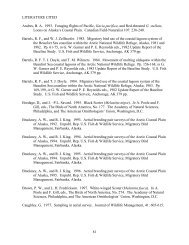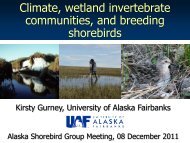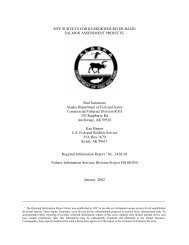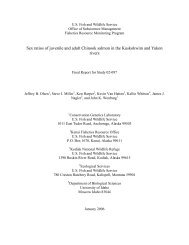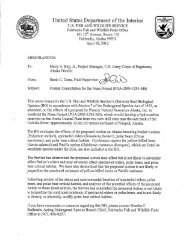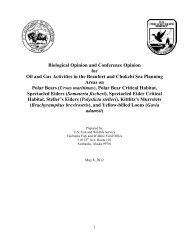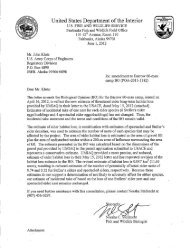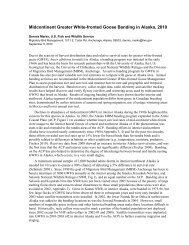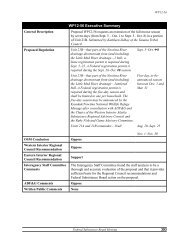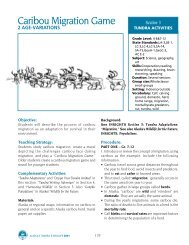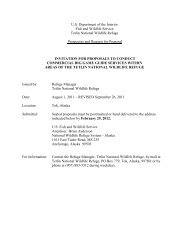Tetlin National Wildlife Refuge - USFWS Alaska Region - U.S. Fish ...
Tetlin National Wildlife Refuge - USFWS Alaska Region - U.S. Fish ...
Tetlin National Wildlife Refuge - USFWS Alaska Region - U.S. Fish ...
Create successful ePaper yourself
Turn your PDF publications into a flip-book with our unique Google optimized e-Paper software.
Formerly Used Defense Sites<br />
CANOL pipeline inspection.<br />
HarryRowed/<strong>National</strong>FilmBoardofCanada/<br />
Library andArchivesCanada/PA-174542<br />
16 <strong>Tetlin</strong> <strong>National</strong> <strong>Wildlife</strong> <strong>Refuge</strong><br />
CANOL pipeline<br />
The CANOL pipeline had a 35 months lifespan from<br />
conception to abandonment, and by one account operated<br />
only 11 months. The pipeline was constructed to carry oil<br />
from Norman Wells on the Mackenzie River in the Northwest<br />
Territories to Whitehorse in the Yukon (where a refinery<br />
was built). Fuel was needed for construction of the <strong>Alaska</strong><br />
Highway, military bases in Canada and <strong>Alaska</strong>, and airfields<br />
used to ship planes to Russia. From Whitehorse, a smaller<br />
pipeline was built alongside the new Alcan Highway to Ladd<br />
Field in Fairbanks, AK. Construction started in summer<br />
1942 and was completed in February 1944. Between July<br />
and November of 1944, the project provided all of the motor<br />
vehicle fuel requirements for military needs between Watson<br />
Lake and Fairbanks and also exported between 20 million and<br />
40 million liters of oil to Skagway. On March 8, 1945, eleven<br />
months after the oil first reached Whitehorse, the U.S. Army<br />
terminated the project.<br />
The U.S. government planned to sell the pipeline to the<br />
highest bidder, who would then operate the CANOL pipeline.<br />
However, no companies bid to operate the pipeline and<br />
salvage operations were undertaken by the U.S. military and<br />
later, in 1947, by Imperial Oil. Salvage operations included<br />
the removal of brass valves, power units, motors, and pipes.<br />
Environmental remediation was not part of any salvage<br />
operation. At present, sections of pipe, vehicle dumps, barrel<br />
caches, and camps remain along the CANOL pipeline route.<br />
In 1998, the EPA performed a site inspection for the CANOL<br />
Pump Station J site, adjacent to the TNWR. Surface water<br />
and sediment was sampled from two locations on the <strong>Refuge</strong>,<br />
as well as at several locations potentially upstream (north)<br />
of <strong>Refuge</strong> lands. Samples were analyzed for residual range<br />
organics (RRO), diesel range organics (DRO), volatile organic<br />
compounds (VOCs) and inorganics. Based on analytical<br />
results, Site Inspection, and “other pertinent information”,<br />
the EPA anticipated no further Federal Superfund action for<br />
Pump Station J.<br />
In 2002, the Tanana Chiefs Conference, Inc. conducted<br />
a Phase II Environmental Site Assessment on a Native<br />
Allotment in Northway Village in response to a landowner



